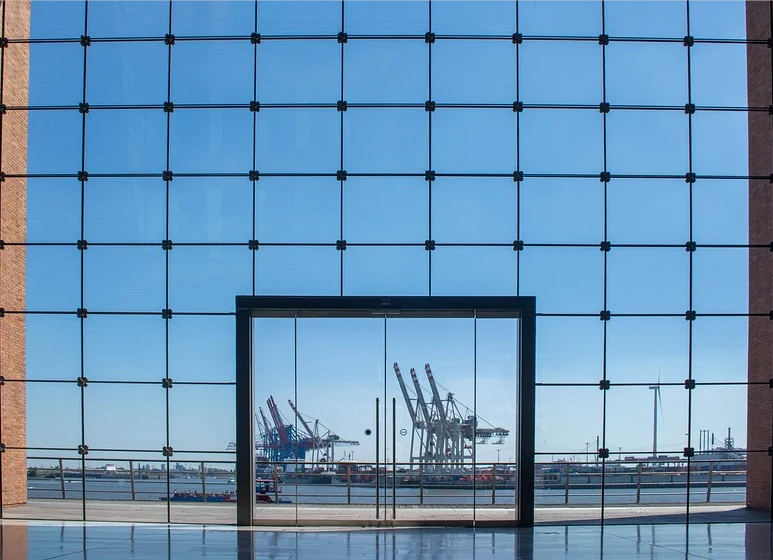
创新背景
防辐射玻璃是指具有防护如x射线、γ射线等放射性射线功能的特种玻璃。放射性射线属于高能量的电磁波,在通过不同的介质时,会导致介质的原子发生电离现象。电磁波波长越短,穿透能力越强。
由于射线的波长与原子的大小属于同一数量级,所以分子吸收系数,可由组成分子的各元素的原子吸收系数相加而得。因此,组成玻璃的各种氧化物的质量吸收系数可按这一原理算出。原子能工业和医学领域的放射性射线问题突出,对于防辐射玻璃的需求也比较大。玻璃吸收强放射线后容易变色,失去透明性,化学性质不够稳定,需要不断增强耐辐射性能。
创新过程
2020年11月,俄罗斯乌拉尔联邦大学的科研人员研发出新型的防辐射玻璃材料,具有优秀的屏蔽防辐射能力,防护辐射效果比现有的防辐射玻璃优秀3倍,吸收光子辐射的能力更强。
传统的防辐射玻璃主要使用防辐射的混凝土和铅,新型玻璃使用了新材料,并采用蒙特卡罗算法和其他计算机建模方法来模拟电离辐射的随机影响。
蒙特卡罗方法是指使用随机数或更常见的伪随机数来解决很多计算问题的方法,以概率统计理论为基础。使用这种算法进行计算机建模,对于电离辐射成果预测更加准确,能更好地开发玻璃的防辐射性能。

制造玻璃使用的材料的质量衰减系数、十倍衰减层、自由行程长度及其他辐射特性等方面的参数都比传统材料的参数大,材料厚度需要仅需传统产品的三分之一,提高性能的同时节约成本。
材料开发所需的原料和计算机建模都需要更加深入研究,使用新材料并深化算法符合原料要求,能够促进材料科学和科技发展。
创新关键点
深化算法利用新材料开发优质性能的防辐射玻璃。
Deepen the algorithm to simulate ionizing radiation and develop new radiation-proof glass
In November 2020, researchers from the Ural Federal University in Russia developed a new type of radiation protection glass material, which has excellent shielding and radiation protection capabilities. The radiation protection effect is 3 times better than the existing radiation protection glass, and the ability to absorb photon radiation is stronger.
While traditional radiation-resistant glass mainly uses radiation-resistant concrete and lead, the new glass uses new materials and uses Monte Carlo algorithms and other computer modeling methods to simulate the random effects of ionizing radiation. Monte Carlo methods refer to methods of solving many computational problems using random numbers or, more commonly, pseudo-random numbers, based on the theory of probability and statistics. Using this algorithm for computer modeling, the prediction of ionizing radiation results is more accurate, and the radiation protection performance of glass can be better developed.
The parameters of the mass attenuation coefficient, ten times attenuation layer, free travel length and other radiation characteristics of the materials used in the manufacture of glass are larger than those of the traditional materials, and the material thickness needs to be only one-third of the traditional products. At the same time save costs.
Both the raw materials and computer modeling required for material development require more in-depth research. Using new materials and deepening algorithms to meet raw material requirements can promote the development of materials science and technology.
智能推荐
AI+材料化学 | 创新利用机器学习缩短测试电池材料的时间
2022-08-25麻省理工学院的研究人员利用机器学习工具,更快建立精确的计算机模型,帮助科学家缩减电池材料的测试时间。
涉及学科涉及领域研究方向AI+金融学 | 新型高精度翻译金融领域文件的引擎
2022-11-22研究人员开发的这种新的基于AI的高精度翻译引擎,可以在日语和英语之间翻译金融部门的文件。
涉及学科涉及领域研究方向机器人工程创新 | 融合了力觉反馈和视觉监控的咽拭子采样机器人
2022-06-28山东烟台清科嘉研究院和清华大学研究团队共同研发的第三代咽拭子采样机器人问世,该系列机器人可自动进行力觉反馈和视觉监控,采样过程全自动,降低感染风险,有效解决人手不足问题,并实现信息上“云”,支持后台实时查询核酸检测数据。
涉及学科涉及领域研究方向AI+动物科学 | AI养殖推动无接触经济时代的养殖业发展
2022-06-29利用AI帮助养殖业无接触发展,人工智能、养殖学和经济交叉创新发展。
涉及学科涉及领域研究方向